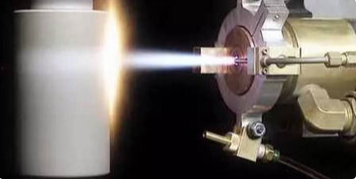

current position:Information and data>Laser cladding technology process field
Laser cladding technology is an interdisciplinary high-tech involving optics, mechanics, electricity, computers, materials, physics, chemistry and other disciplines. It was proposed in the 1960s, and the first patent on high-energy laser cladding was born in 1976. In the 1980s, laser cladding technology has developed rapidly. Combined with the rapid prototyping processing technology emerging from CAD technology, it has added new vitality to laser cladding technology.
Laser cladding of self-fluxing alloy powders and ceramic phases such as cobalt-based, nickel-based, and iron-based alloys on the surfaces of stainless steel, die steel, malleable cast iron, gray cast iron, copper alloy, titanium alloy, aluminum alloy and special alloys has been successfully carried out. Laser cladding iron-based alloy powder is suitable for parts that require local wear resistance and are easily deformed. Nickel-based alloy powder is suitable for components requiring local wear resistance, heat resistance corrosion resistance and thermal fatigue resistance. Cobalt-based alloy powder is suitable for parts requiring wear resistance, corrosion resistance and thermal fatigue resistance. Ceramic coating has high strength at high temperature, good thermal stability and high chemical stability, and is suitable for parts requiring wear resistance, corrosion resistance, high temperature resistance and oxidation resistance. Under the conditions of severe sliding wear, impact wear and abrasive wear, pure nickel-based, cobalt-based and iron-based alloy powders can no longer meet the requirements of the working conditions. Therefore, laser cladding metal-ceramic composite coatings on the alloy surface has become a The research hotspot of scholars at home and abroad has carried out research on laser cladding of various ceramic or cermet coatings on the surface of steel, titanium alloy and aluminum alloy.
The application of laser cladding is mainly in two aspects, namely corrosion resistance (including high temperature corrosion resistance) and wear resistance, and the application range is very wide, such as the sealing surface of the valve and valve seat of the internal combustion engine, the sealing surface of the water, gas or steam separator. Laser cladding, etc.
At the same time, to improve the wear resistance and corrosion resistance of the material, Co-based alloys (such as Co-Cr-Mo-Si series) can be used for laser cladding. The existence of Co3Mo2SI hard intermetallic phase in the range of phase composition in the matrix can ensure the wear resistance, while Cr provides corrosion resistance.
与此原文有关的更多信息要查看其他翻译信息,您必须输入相应原文
Hot information

